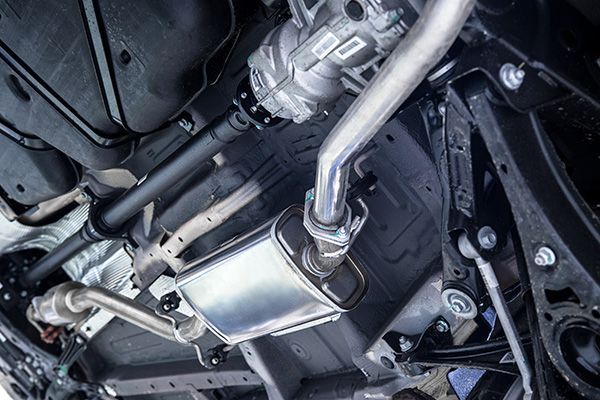Loading ...
Missing business hours data / Error occurred while getting the data.
8 Essential Steps to Prepare Your Car for Cold Weather
September 27, 2024

As the cold months roll in, prepping your car is a smart move to ensure it runs efficiently and keeps you safe on the road. Freezing temperatures, icy conditions, and heavy snow can all put additional stress on your vehicle, leading to issues if left unchecked. Fortunately, taking a few preventative steps can go a long way in avoiding potential headaches when the cold weather hits. Here’s a guide on the eight essential steps to get your car winter-ready.
1. Test Your Battery
The drop in temperature can significantly affect your car’s battery performance. Cold weather slows down the chemical reactions inside the battery, making it harder for your car to start. A weak or old battery can fail completely during the winter months.
Before the freezing cold sets in, check the voltage and overall condition of your battery. If it’s over three years old, consider getting it tested by a professional or replaced altogether to avoid being stranded with a dead battery on a chilly morning.
2. Inspect Your Tires and Consider Winter Tires
Tire maintenance is essential as cold weather can cause the air inside your tires to contract, lowering tire pressure. This can lead to uneven wear, reduced traction, and poor fuel economy. Make sure your tires are properly inflated according to your vehicle’s recommended PSI levels.
If you live in an area prone to snow or ice, it’s also a good idea to switch to winter tires. These tires have a deeper tread and special rubber compounds designed to handle extreme cold, providing better traction and control on slippery roads.
3. Check Your Antifreeze Levels
Antifreeze, also known as coolant, is crucial for keeping your engine from freezing when temperatures drop. It also prevents the engine from overheating in extreme weather. Over time, antifreeze can become contaminated and less effective.
Make sure the antifreeze levels in your car are correct and top them off if necessary. You can also have your coolant tested to ensure the mixture is ideal for cold weather conditions. If the antifreeze is old or dirty, a coolant flush may be needed.
4. Change Your Oil and Check Fluids
Cold weather can affect the viscosity of your oil, making it thicker and less efficient at lubricating your engine. Some vehicles require a thinner, winter-grade oil for optimal performance in freezing temperatures.
Check your owner’s manual to see if your car needs a different oil type for winter. While you’re at it, make sure all other essential fluids—such as transmission fluid, brake fluid, and windshield washer fluid—are topped off and in good condition.
5. Test Your Heating System
Nobody wants to be driving in freezing weather without heat. Ensure your heating system is working properly before winter hits. This includes checking the heater, defroster, and seat warmers, if applicable.
A functioning defroster is particularly important for maintaining visibility on frosty mornings. If your heating system isn’t working efficiently, get it checked and repaired before temperatures plummet.
6. Replace Your Wiper Blades
Visibility is critical in winter driving conditions, and old wiper blades won’t do you any favors when snow, sleet, or rain starts falling. Worn-out blades can leave streaks or fail to clear your windshield effectively, making it harder to see.
Invest in a pair of winter wiper blades. These are specifically designed to handle snow and ice buildup, ensuring your windshield stays clear even in harsh conditions.
7. Keep an Emergency Kit in Your Car
No matter how well you prepare, emergencies can still happen, especially in winter. It’s essential to have an emergency kit in your car in case you get stuck or face a breakdown in freezing conditions.
Your winter car emergency kit should include items like a flashlight, blankets, ice scraper, jumper cables, first-aid supplies, snacks, and extra warm clothing. Having this kit on hand can make a big difference if you find yourself in a difficult situation.
8. Check Your Brakes
Your brakes are critical for safe winter driving, especially on slick, icy roads. If your brakes are making any strange noises or don’t feel as responsive as they should, it’s time to have them inspected.
Cold weather can cause brake fluid to thicken, reducing the effectiveness of your brakes. Get your braking system checked to ensure that your brake pads, rotors, and fluid levels are all in good condition for the winter.
Prepare your car for the cold weather at LightHouse Automotive . Whether it’s a battery check, tire swap, or fluid top-off, we’ll ensure your vehicle is ready. Book your appointment today!





Loading ...
Missing business hours data / Error occurred while getting the data.
trouble finding us?
Loading ...
Missing nap lines data / Error occured while getting the data.


.jpeg)


